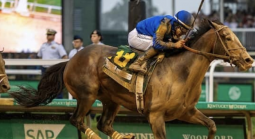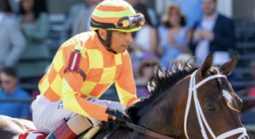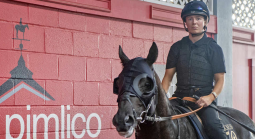Morning Line vs. Final Odds: What the Shift Reveals About the Race
Horse racing offers a unique betting environment that can be both exciting and overwhelming, especially for newcomers. With a wide range of betting options, changing odds, and unfamiliar terminology, it's easy to get confused about what the numbers mean and how they affect your wagers.
One of the most common points of confusion for new bettors is the difference between the odds listed in the program before betting starts and the odds shown right before the race begins. These numbers often differ, and understanding why they change is an essential part of becoming a smarter and more confident bettor.
What Is the Morning Line?
The morning line is the set of projected odds created by a racetrack’s official handicapper before any betting takes place. These odds appear in the official race program and serve as a reference point for bettors evaluating the field early in the day.
These odds are based entirely on predictions. They are essentially a starting framework that attempts to anticipate which horses are likely to attract the most or least wagering attention once the betting windows open. Understanding how the morning line reflects early expectations is a fundamental concept covered in most horse betting tips and guides, particularly for those still learning about the interaction between odds and betting behavior.
How Morning Line Odds Are Set
Setting an accurate morning line is a mix of skill, experience, and market understanding. The track handicapper reviews a range of variables to estimate how the public is likely to bet on each horse. These factors include:
- Recent Performance
- Class Level and Form Cycle
- Track Conditions
- Trainer and Jockey Stats
- Public Perception and Bias
- Pace and Position Factors
The handicapper balances these elements to assign each horse odds that reflect expected betting popularity, not necessarily true win probability.
What Are Final Odds?
The final odds, also known as post-time odds, are the actual betting odds when wagering closes—right before the race begins. These odds are calculated entirely by the betting activity of the public. They represent how much money was wagered on each horse and determine how much a winning bet will pay out.
Final odds are not influenced by the track’s handicapper or any predictions. They are a real-time reflection of public sentiment, last-minute shifts in opinion, and betting momentum.
How Final Odds Are Determined
Horse racing in the United States operates under a pari-mutuel betting system. All bets of the same type, such as Win or Exacta, are pooled together. When betting closes, the track takes a percentage, known as the takeout, to cover expenses and pay out the prize money. The remaining pool is divided among the winning bets.
The more money placed on a horse, the smaller the share of the pool for each winning ticket. This causes the odds to drop and the payout to shrink. Less popular horses with fewer bets keep higher odds and offer larger payouts.
Odds are not fixed and continue to change until betting ends. The final odds at post time determine the payout, no matter when the bet was placed. Bettors cannot lock in odds ahead of time.
What the Shift Reveals
Understanding the shift between morning line and final odds can yield profitable insights:
Public Confidence vs. Smart Money
A noticeable drop in a horse’s odds just before post time can indicate the presence of sharp money. Professional bettors and wagering syndicates often wait until the final minutes to place large bets, minimizing the chance of tipping off the public too early. These late bets can quickly move the odds, signaling increased confidence from informed sources.
On the other hand, when a morning line favorite sees its odds drift higher instead of shortening, it may suggest that experienced bettors are avoiding the horse. This type of movement can suggest that insiders or astute players are aware of factors that the general public has overlooked.
Market Efficiency
The betting pool reflects thousands (or millions) of opinions. By the time it's posted, it often "solves" the race better than any individual could. That said, public bias (e.g., betting a horse just because of its name or color) still creates value opportunities.
Overlay Identification
An overlay happens when a horse’s final odds are longer than their actual chances of winning. These are gold mines for savvy bettors. For example, a horse you rate as a 4‑1 chance might drift to 8‑1. Even if it loses most of the time, long-term value betting on these overlays can be a profitable strategy.
Final Thoughts
The difference between morning line and final odds reveals how betting expectations align with actual public wagering. Morning line odds are early estimates made before any money is bet. Final odds are based on how much money is placed on each horse and are set right before the race begins.
Watching how odds shift between these two points can help bettors understand where the public and sharp money are going. It can also point to horses that may be overvalued or overlooked. Learning to recognize these patterns gives bettors useful information to make better and more informed decisions.














